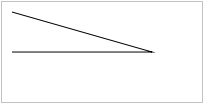HighchartsЧПДѓЕФРЉеЙЙІФмЃЌЪЧЫќЩюЪмЙуДѓгУЛЇЯВАЎЕФдвђжЎвЛЁЃЭЈЙ§ЪЙгУhighcharts apiЃЌКмЖрЪЙгУепИљОнздМКЕФашЧѓжЦзїСЫhighchartsВхМўЃЌЪЕЯжСЫИїжжЙІФмРЉеЙЁЃЙигкhighcharts жаЮФНЬГЬзЪдДвбОБШНЯЖрСЫЃЌЖјРЉеЙетвЛПщЕФhighchartsНЬГЬЯрЖдБШНЯЩйЁЃНёЬьЃЌЮвУЧОЭРДЩюШыбаОПhighchartsРЉеЙЙІФмЃЌЮЊДѓМвЗюЩЯжЦзїВхМўЕФhighcharts жаЮФНЬГЬЁЃ
ЯрЙизЪдДЃКздДг2.3АцБОвдРДЃЌHighchartsОЭвЛжБвдФЃПщЛЏЕФЗНЪНдкРЉеЙЃК
HighchartsВхМўЗтзАКЭjQueryВхМўвЛбљЃЌHighchartsВхМўвВашвЊгУФфУћЕФздЖЏжДааКЏЪ§РДЗтзАЃЌвдЗРвўВиШЋОжБфСПЁЃ КУЕФЗтзЁЗНЗЈШчЯТЃК
(function (H) { var localVar, // local variable Series = H.Series; // shortcut to Highcharts prototype doSomething(); }(Highcharts)); HighchartsЕїгУCHART.INITЮЊСЫЯђЭМБэЕФЯжгаВПЗжЬэМгЪТМўМрЬ§ЦїЃЌЭМБэЪзДЮфжШОКѓЃЌПЩвдДДНЈвЛИіЭЈгУЛиЕїКЏЪ§ВЂдЫааЃЌНЋКЏЪ§ЗХЕНChart.prototype.callbacksЪ§зщжаФмЭъГЩЩЯЪіВйзїЁЃ
H.Chart.prototype.callbacks.push(function (chart) { H.addEvent(chart.container, 'click', function (e) { e = chart.pointer.normalize(); console.log('Clicked chart at ' + e.chartX + ', ' + e.chartY ); }); H.addEvent(chart.xAxis[0], 'afterSetExtremes', function (e) { console.log('Set extremes to ' + e.min + ', ' + e.max); }); }); ЪдвЛЪдЃКаЇЙћЭМ

highcharts demoДњТыЃК
(function (H) { Highcharts.Chart.prototype.callbacks.push(function (chart) { H.addEvent(chart.container, 'click', function (e) { e = chart.pointer.normalize(); console.log('Clicked chart at ' + e.chartX + ', ' + e.chartY); }); H.addEvent(chart.xAxis[0], 'afterSetExtremes', function (e) { console.log('Set extremes to ' + e.min + ', ' + e.max); }); }); }(Highcharts)); var chart = new Highcharts.Chart({ chart: { renderTo: 'container', zoomType: 'x' }, xAxis: { categories: ['Jan', 'Feb', 'Mar', 'Apr', 'May', 'Jun', 'Jul', 'Aug', 'Sep', 'Oct', 'Nov', 'Dec'] }, series: [{ data: [29.9, 71.5, 106.4, 129.2, 144.0, 176.0, 135.6, 148.5, 216.4, 194.1, 95.6, 54.4] }] }); HighchartsКЏЪ§даЭЗтзАгазХЖЏЬЌЬиадЕФJavaScriptдкЖЏЬЌИФБфНХБОааЮЊЪБЗЧГЃЧПДѓЁЃдкHighchartsжаПЩвдДДНЈвЛИіУћЮЊwarpЕФЪЕР§ЁЃЫќПЩвдЗтзАЯжгаЕФКЏЪ§даЭЃЈ“method”ЃЉЃЌдЪаэФудкетжЎЧАЛђжЎКѓЯђЦфжаЬэМгздМКЕФДњТыЁЃ
wrapКЏЪ§ЕФЕквЛИіВЮЪ§ЮЊИИРрЖдЯѓЃЌЕкЖўИіВЮЪ§ЮЊвЊЗтзАЕФКЏЪ§ЕФУћзжЃЌЕкШ§ИіВЮЪ§ЮЊЛиЕїЬцЛЛКЏЪ§ЁЃдЪМКЏЪ§зїЮЊЕквЛИіВЮЪ§ДЋЕнИјЬцЛЛКЏЪ§ЃЌдЪМЕФВЮЪ§вВзёбетИіЙцдђЁЃ
ДњТыЪОР§ЃК
H.wrap(H.Series.prototype, 'drawGraph', function (proceed) { // Before the original function console.log("We are about to draw the graph: ", this.graph); // Now apply the original function with the original arguments, // which are sliced off this function's arguments proceed.apply(this, Array.prototype.slice.call(arguments, 1)); // Add some code after the original function console.log("We just finished drawing the graph: ", this.graph); }); ЪдвЛЪдЃКаЇЙћЭМ
аЇЙћЭМ

highcharts demoДњТыЃК
(function (H) { H.wrap(H.Series.prototype, 'drawGraph', function (proceed) { // Before the original function console.log("We are about to draw the graph:", this.graph); // Now apply the original function with the original arguments, // which are sliced off this function's arguments proceed.apply(this, Array.prototype.slice.call(arguments, 1)); // Add some code after the original function console.log("We just finished drawing the graph:", this.graph); }); }(Highcharts)); var chart = new Highcharts.Chart({ chart: { renderTo: 'container' }, xAxis: { categories: ['Jan', 'Feb', 'Mar', 'Apr', 'May', 'Jun', 'Jul', 'Aug', 'Sep', 'Oct', 'Nov', 'Dec'] }, series: [{ data: [29.9, 71.5, 106.4, 129.2, 144.0, 176.0, 135.6, 148.5, 216.4, 194.1, 95.6, 54.4] }] }); аЁЪдХЃЕЖбЇЯАжЎКѓЃЌЮвУЧРДЪЕМљвЛЯТЁЃЮвУЧРДПДвЛИіАИР§ЃЌдкетИіР§згжаЃЌПЭЛЇЯывЊдкHighstockЕФСаРраЭЯЕСаЪЙгУБъМЧЃЈ“trackballs”ЃЉЃЌЖјЕБЧАжЛгаЯпРраЭЯЕСажЇГжБъМЧЁЃЮЊСЫЪЕЯжетИіЙІФмЃЌашвЊБраДвЛИіаЁВхМўЁЃ
етИіВхМўдкУПИіВЛжЇГжКЭВЛАќКЌБъМЧЕФЭМБэжаЬэМгвЛИіtrackballЁЃ
ЮЊСЫЭъГЩетИіШЮЮёЃЌДгвдЯТДњТыШыЪжЃКДДНЈвЛИіАќКЌДЫВхМўЕФздЖЏжДааКЏЪ§ЁЃ
(function (H) { // This is a self executing function // The global variable Highcharts is passed along with a reference H }(Highcharts));жЎКѓЃЌашвЊЮЊЗНЗЈTooltip.prototype.refreshКЭTooltip.prototype.hideЬэМгЦфЫћЕФЙІФмЁЃвђЖјЃЌЗтзАетИіЗНЗЈЁЃ
(function (H) { H.wrap(H.Tooltip.prototype, 'refresh', function (proceed, points) { // When refresh is called, code inside this wrap is executed }); }(Highcharts));
ЁЁ
 ЯрЙиЮФеТ
ЯрЙиЮФеТ

 ОЋВЪЕМЖС
ОЋВЪЕМЖС ШШУХзЪбЖ
ШШУХзЪбЖ ЙизЂЮвУЧ
ЙизЂЮвУЧ
